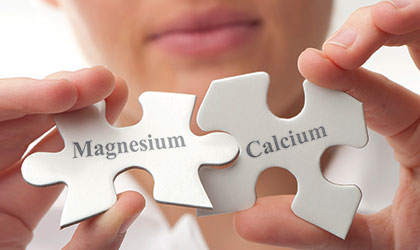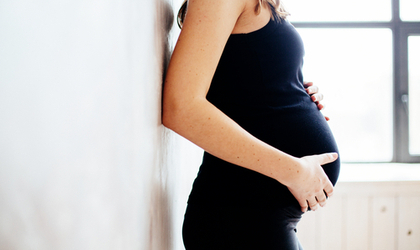
Beyond having a positive impact on energy levels, mood disorders, immunity, muscle weakness, and much more, the so-called ‘sunshine nutrient’ is a key cornerstone of strong and hardy bones. Contrary to what the old wives’ tales and TV ads may have taught you, there’s more to bone health than simply chowing down on calcium-rich cheese and milk. In fact, you might argue vitamin D is just as important as this mineral. So, even if you’re preparing to bid adieu to the sunshine between October and early March, here’s why you shouldn’t be saying farewell to the bone-supporting vitamin D. In short, this nutrient needs to become a central part of your bone health arsenal all year round.
The science
You’re probably familiar with the old adage ‘calcium makes your bones grow stronger’. But this is only half the truth. Yes, this mineral is an essential building block of your bones, helping to maintain strength and durability throughout your lifetime, yet calcium can only reach its full bone-supporting potential if your body has an adequate supply of vitamin D. You see, calcium and vitamin D work in tandem to safeguard your bones: calcium builds and sustains bones, while vitamin D aids with the absorption of calcium. So, even if your calcium stores are plentiful, they’re completely redundant if you’re deficient in vitamin D. Indeed, studies have illuminated adults with poor vitamin D levels typically have lower bone density and are more prone to bone loss than those who get enoughi.
How much vitamin D do you need?
According to national surveys in the UK, a staggering 1 in 5 people has low vitamin D levels, putting individuals at a greater risk of poor musculoskeletal healthii. When it comes to vitamin D, there are five types confusingly (as if there weren’t enough nutrients to get your head around already?). But it’s vitamin D3 that’s the most important. Though the body needs both the plant-based vitamin D2 and animal-based (also found in lichen plant extract) D3, the latter is absorbed much more efficiently. Plus, vitamin D3 is the only nutrient that can be produced by the body from direct sun exposure. According to a study conducted by the University of Surrey, researchers found vitamin D3 is twice as effective as D2 in supporting the vitamin level in the bodyiii.
As a rule of thumb, aim for 10mcg (micrograms) of vitamin D every day, all year round. All breastfed infants aged 0-1 years should also receive 8.5mcg to 10mcg of vitamin D. Pregnant women, nursing mothers, those with darker skin tones, or individuals who spend little time outside are more likely to experience low levels of vitamin D. Live up north? You better start topping up, too.
What are the best dietary sources of vitamin D?
Theoretically, it is entirely possible to get enough vitamin D from your diet alone. In reality, however, your choice of vitamin D-rich food is pretty limited, especially if you’re a vegetarian or vegan. At most, your vitamin D intake will likely comprise of 20% food. Besides natural sources like oily fish (salmon, trout, mackerel, and herring), lamb’s liver, some pork products, and eggs, other vitamin D3-fortified foods including orange juice, breads, and milk. Did you know mushrooms are the only plant-based source of vitamin D? Top tip: you can up the vitamin D credentials of your fungi by placing them by a sunny window. As if by magic, the vitamin D content is naturally increased by the ultraviolet light. Impressive, right?
Rich vitamin D foods
-
Raw herrings (140g): 26mcg
-
Raw trout (140g): 14.8mcg
-
Raw tuna (140g): 10.8mcg
-
Raw salmon (140g): 8.4mcg
-
Canned salmon (1/2 can: 8mcg
-
Mushrooms (100g): 5mcg
-
Two boiled eggs: 1.8mcg
-
Bran flakes (30g): 1.3mcg
The vitamin D diet
Breakfast
Scrambled eggs on wholegrain toast
Vitamin D content: 1.8mcg (or 2.5mcg if you add half a cup of fortified milk into the eggs)
Lunch
A bowl of rich mushroom soup
Vitamin D content: 6mcg
Dinner
Baked salmon with potatoes and roasted vegetables
Vitamin D content: 9mcg
What about sunlight?
Of course, vitamin D hasn’t earned its stripes as the ‘sunshine nutrient’ for nothing. As the name would suggest, yes – the greatest source of vitamin D comes from the sun. When sunlight hits your skin, your body is then able to synthesize vitamin D. From April to September, you can get your daily dose from the sun alone in the UK. Throughout this window, it’s advised that you expose your skin to direct sunlight for approximately 10 minutes, twice every day. Be mindful that you need to be physically outside, too; glass windows will stop the UV rays from penetrating. Just another excuse to stretch your legs.
The secret to soaking up all that vitamin D goodness is short bursts of sun exposure, during which you shouldn’t wear sun cream since this will stop the rays from reaching you. Outdoor tasks like walking to the shops, pulling up weeds, and hanging out washing should be enough time to absorb up that bone-bolstering vitamin D without damaging your skin, which could do more harm to your body than good. Don’t forget to apply sun protection if your skin is exposed for more than 10 minutes. Oh, and always avoid the midday sun – when the sun is at its hottest.
And what about supplements?
New advice from Public Health England says children of one and adults should receive 10mcg of vitamin D every dayiv. And this means some people may want to consider taking a supplement. While we’d urge you to cram more vitamin D rich foods into your diet and get as much sunlight as possible, let’s not forget food choices can be restrictive and the sun doesn’t always show its face in the UK, particularly in winter months. The safest way to plug any nutritional gaps you may encounter, especially between October and early March, is by adding a vitamin D supplement to your diet – something that comes highly recommended by the NHS, we might addv. Always look for a formula that packs at least 10mcg of vitamin D, too. Think of this as an ‘insurance policy’ – a simple tool to ensure this nutritional base is covered.
References:
-
Bener. A. & Saleh. N. (2015). Low vitamin D, and bone mineral density with depressive symptoms burden in menopausal and postmenopausal women. Journal of Mid-life Health. 6(3), p.108.
-
(2019). New advice on vitamin D - British Nutrition Foundation. Nutrition.org.uk. Available online: https://patient.info/bones-joints-muscles/osteoporosis-leaflet/vitamin-d-deficiency [Accessed 3 Apr. 2019].
-
Surrey.ac.uk (2019). Worldwide health authorities urged to rethink vitamin D guidelines following revolutionary study: University of Surrey. Available online: https://www.surrey.ac.uk/mediacentre/press/2018/worldwide-health-authorities-urged-rethink-vitamin-d-guidelines-following [Accessed 3 Apr. 2019].
-
GOV.UK. (2019). PHE publishes new advice on vitamin D. Available online: https://www.gov.uk/government/news/phe-publishes-new-advice-on-vitamin-d [Accessed 2 Apr. 2019].
-
nhs.uk. (2019). Vitamin D. Available online: https://www.nhs.uk/conditions/vitamins-and-minerals/vitamin-d [Accessed 3 Apr. 2019].
Bibliography:
-
Theros.org.uk. (2019). Vitamin D for bones - Royal Osteoporosis Society. Available online: https://theros.org.uk/information-and-support/looking-after-your-bones/vitamin-d [Accessed 2 Apr. 2019].
You Might Also Like

Keri
Keri Filtness has worked in the Nutrition Industry for 19 years. She is regularly called upon for her professional comments on health and nutrition related news. Her opinions have been featured by BBC3, Prima, Vitality, The Mirror, Woman’s Own and Cycling Weekly, amongst others. She has also worked one to one with journalists, analysing their diets and health concerns and recommending changes and additions, where appropriate.
View More



